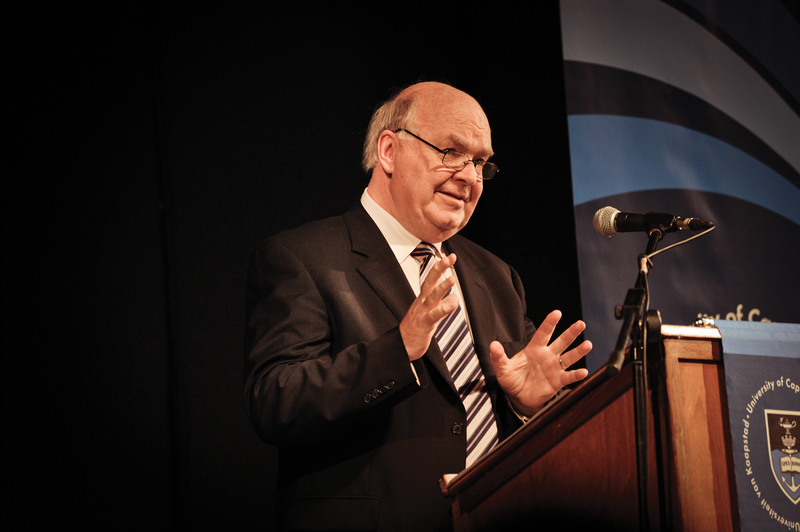Theism versus atheism
02 April 2013
Oxford don puts forward the case for God
Is there 'too much ado about nothing' when it comes to negotiating the complex intersection between science, philosophy and theology? This was the question posed by John Lennox, Professor of Mathematics at the University of Oxford, in his recent Vice-Chancellor's Open Lecture titled A Matter of Gravity - God, the Universe and Stephen Hawking.
The majority of great scientists in the past had believed in God, he said. "Were Galileo, Kepler, Newton and Maxwell, to name but a few, really all wrong on the God question?" The very fact that there were leading scientists who believed in God, and leading scientists who did not, "shows us that the simplistic notion that science is somehow at war with belief in God, is false".
The conflict, he said, was a conflict of world views. "On the one hand there is the naturalistic world view that says the cosmos is all that exists, and on the other is the theistic world view, which holds that the cosmos is not all that exists and that there is a God who created and maintains it." Lennox described world-renowned physicist and cosmologist Stephen Hawking's recent statement that philosophy was dead and that scientists had become "the bearers of the torch of discovery in our quest for knowledge" as "startling", and said that this was, in itself, a philosophical statement. "It's not a statement of science, but rather a metaphysical statement about science," he added. "The view that scientists have become the bearers of the torch of discovery smacks of scientism."
There was no inconsistency in being a scientist of the highest level, and simultaneously recognising that science was not in a position to answer every kind of question, including some of the deepest questions humans could ask. Hawking's flawed view of philosophy led to a flawed view of God, said Lennox. Without God, there would be nothing there for physicists like Hawking to study.
"God is the creator of the bits of the Universe we don't understand, as well as the bits we do, and it's the bits that we do understand that provide most evidence of his existence and activity. "Just as my appreciation of a work of art or engineering increases the more I understand the disciplines of art and engineering, so my worship of the creator increases the more I understand the Universe he has created," Lennox said.
Hawking's notion that a law of nature - gravity - explained the existence of the Universe was contradictory, since a law of nature depended on the prior existence of the nature it purported to describe. He said nonsense remained nonsense, even when it was spoken by world-class physicists. It was important to realise that statements by a scientist (including himself) were not necessarily statements of science. Immense prestige and authority did not compensate for faulty logic.
Lennox said Hawking had failed to answer the question, "Why is there something, rather than nothing?" "For me, as a Christian believer, the beauty of the scientific laws reinforces my faith in an intelligent, divine creator. The more I understand science, the more my faith in God is confirmed." He concluded: "As a scientist, I find that by far the most compelling explanation (for God's existence) is that behind the Universe, there is a grand designer of infinite wisdom and intelligence.
"It is my science, and not simply my faith in God, that tells me that it makes perfect sense to say about our Universe, in terms of its ultimate explanation, 'in the beginning was the word, and the word was with God and the word was God. All things came to be, through him'."
 This work is licensed under a Creative Commons Attribution-NoDerivatives 4.0 International License.
This work is licensed under a Creative Commons Attribution-NoDerivatives 4.0 International License.
Please view the republishing articles page for more information.










